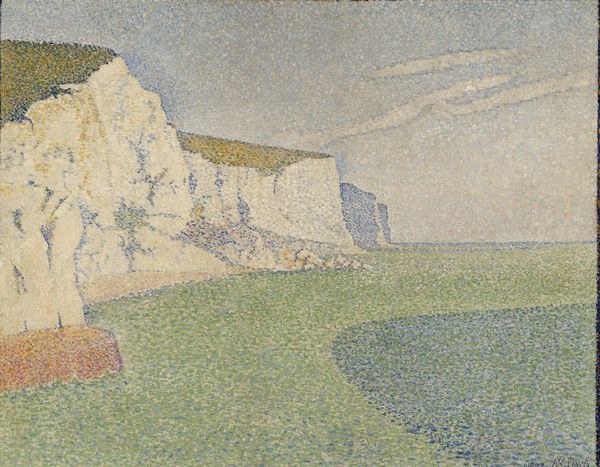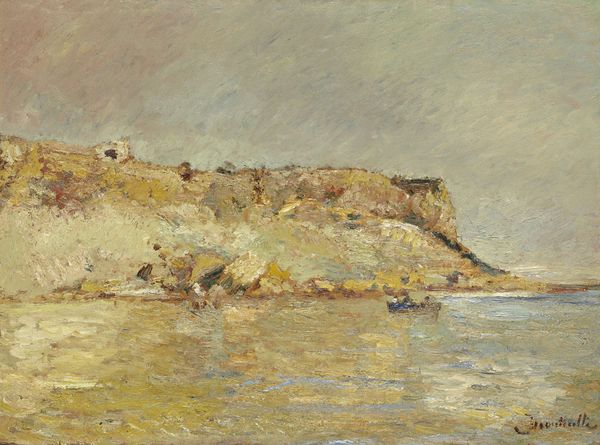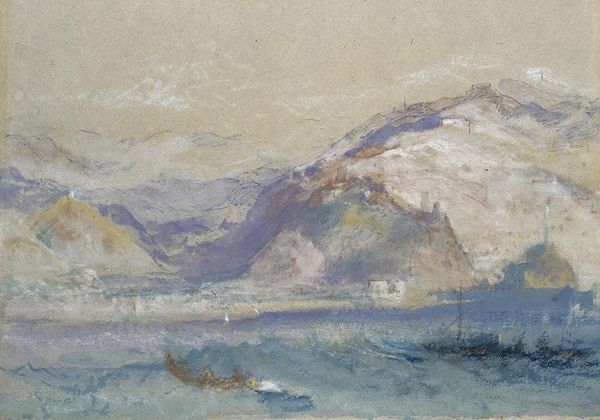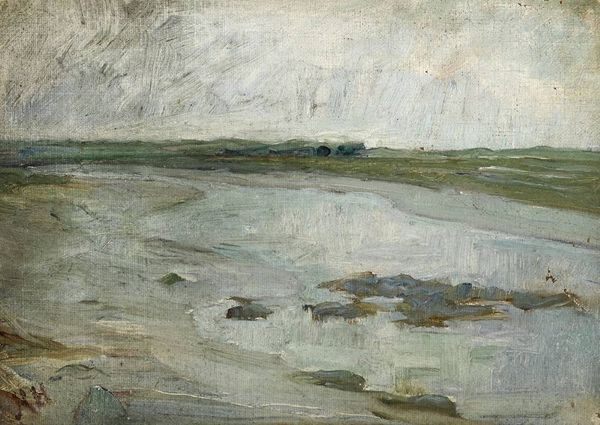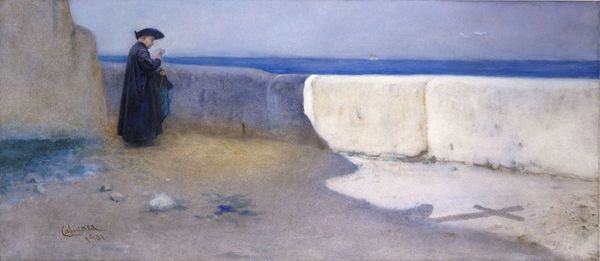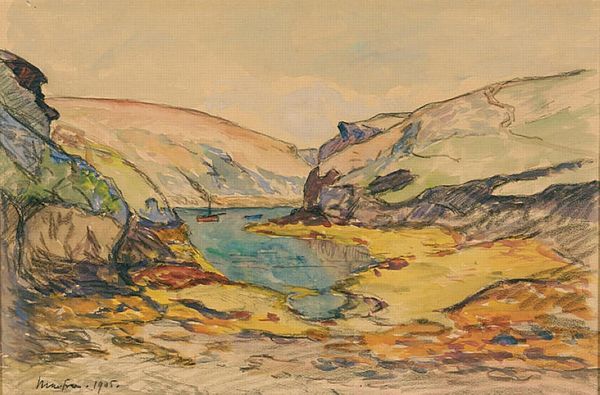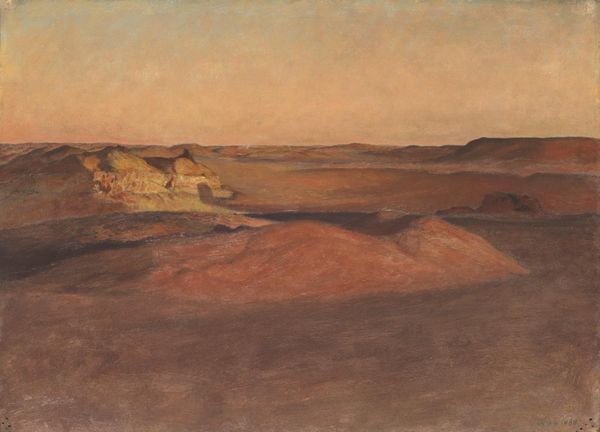
Dimensions: support: 756 x 1010 mm
Copyright: © The estate of Sir William Rothenstein. All Rights Reserved 2010 / Bridgeman Art Library | CC-BY-NC-ND 4.0 DEED, Photo: Tate
Curator: Here we have Sir William Rothenstein's "The White Cliffs, Vaucottes," a lovely oil on canvas landscape from the Tate's collection. Editor: It’s got this subdued, almost melancholic feel to it, doesn't it? Like a memory fading into the mist. Curator: Rothenstein was deeply engaged with social issues; I wonder if this quiet scene reflects a longing for simpler times away from industrial expansion. Editor: Perhaps. Or maybe it's about the impermanence of things. Those cliffs, beautiful as they are, are constantly eroding, changing. The land is never still. Curator: That's a poignant read. I suppose it's up to each of us to decide what resonates. Editor: Exactly. And for me, it’s this quiet reminder that even in the face of change, there is still beauty.
Comments
tate 6 months ago
⋮
http://www.tate.org.uk/art/artworks/rothenstein-the-white-cliffs-vaucottes-n05436
Join the conversation
Join millions of artists and users on Artera today and experience the ultimate creative platform.
tate 6 months ago
⋮
Vaucottes is on the Normandy coast in France, near the village of Vattetot. This area was chosen regularly for summer painting holidays by former Slade School pupils and their friends. The Rothenstein family usually spent summers at Vattetot. Rothenstein and his wife had discovered the village in 1899, while on honeymoon. They went with Sickert (who then lived in Dieppe) and were shortly joined there by Augustus John, Charles Conder and William Orpen. Rothenstein recalls that they 'would bathe at the little cove at Vaucottes, and returning, the women would hang glow-worms in their hair' (Rothenstein, I, p.348). On later trips, they were often joined by the artist Gerard Chowne and his wife, and the painter Frank Darwin, and would walk down from the inn with their children to bathe. Speaight recounts an episode: 'On one occasion, when [Rothenstein] was painting the cliffs at Vaucottes and the children were playing round him, the tide came up, higher and higher, until the water was lapping round his canvas. He then packed it up, put it on a rock, and had to swim with each of the children across the bay until they reached dry land.' (Speaight, p.221.)It was at Vattetot that Alice Rothenstein and Augustus John posed for Rothenstein's picture The Doll's House (1899, Tate Gallery N03189). A view of the cliffs seen from the other side, Cliffs near Vaucottes, dated 1910, is in the Rutherston Collection, Manchester City Art Gallery. Also from the opposite side are Round the Cliff on a Sudden Came the Sea and The South West Wind (1909).The picture was first exhibited in 1910 and was included in the British Pavilion of the 1930 Venice Biennale. It has been known by various titles; the current title is the one agreed on by the artist when the painting was acquired by the Tate Gallery.Further reading:William Rothenstein, Men and Memories, I, London 1931, pp.347-8 and II, London 1932, p.160 Robert Speaight, William Rothenstein: The Portrait of an Artist in his Time, London 1962, pp.220-1Terry RiggsJanuary 1998

